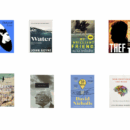Will Uber run out of road?

Uber is a very big deal, and I was enthusiastic about it long before any of us experienced it in Kenya.
Can anyone doubt the achievement? Uber revolutionized the taxi business by conceiving a marvellous mobile app that connected people seeking rides with drivers willing to offer them. By tapping into an unused stock of cars and drivers in the world, and linking that stock to people who had never thought of taking a cab, Uber brought cheap and convenient travel and income opportunities to vast numbers of people.
In 2017, though, I worried about Uber on this page.
I worried about its many fractious fights with regulators; its myriad court battles; its people practices; and much else. Much of that was to do with its founder, Travis Kalanick. I wrote then: ‘Insolent aggression and disdain for criticism may be forgiven when you are the founder and key shareholder in a startup; but they become serious liabilities when you head a major corporation with wider responsibilities. No matter how awesome your talent, being the CEO of a global firm will not be entrusted to a jerk.’
Mr Kalanick left, to be replaced by the much more calm and thoughtful Dara Khosrowshahi, who brought a more grown-up ethos to Uber. And yet. Earlier this year the company announced its biggest-ever quarterly loss, a staggering $5.24 billion. A good chunk of that was from one-off payments relating to stock-based compensation, but still. Uber has a problem: it’s never made a profit. It raises mountains of cash, but it can’t (yet) make money.
Why is that? There are two fundamental reasons: competition; and costs.
Let’s look at the first one. Uber may have pioneered ride-hailing, but wherever it appears other competitors also pop up. There are hardly any barriers to entry. Once other firms work out how that app and its algorithms work, bingo – they’re in. There are no huge investments needed. There’s very little that differentiates the user experience. Indeed, the same drivers and same cars can be found on multiple apps. The only thing that makes you win with the customer is the availability of your cars – and the price of the ride.
There are also very low switching costs. Both customers and drivers switch all the time. There is little emotional attachment, or convenience, in staying with one app provider. If one firm raises prices, customers jump to another. And so the only way to win this game is to keep subsidising customers and/or drivers. Which means…losses. Lots of them.
That brings me to the second challenge: the cost of providing the service. Uber grew dramatically by slashing the cost of taxi rides everywhere. You, your employees, your children and even your househelp – everyone could hop on an Uber from time to time. But those two-dollar fares are only possible if the guy driving the car is subsidised somehow. And for as long as that guy is needed, there’s a problem.
Uber knows this very well; it pitches its long-term vision on autonomous cars, when the driver is removed from the equation and fares can be sustainably low. The driver is a current hindrance, one to be managed while the transition to self-driving occurs.
How long will that transition take, though? If it takes five years, Uber probably makes it to the promised land. If it takes ten years, Uber probably runs out of road.
Let’s be clear: ride-hailing is a great innovation, one that can’t be reversed. We are not going back to cartel taxis and monopoly pricing. The genie is out of the bottle. The issue is the business model that can take us to everyday low pricing and convenience. Uber is now desperately seeking to calm its spending and differentiate via associated services like food, freight and finance.
Why is it that so many tech startups start smoking something that generates visions of global dominance from the get-go? Uber seemed to have no interest in a future as a taxi disruptor; it wanted to rule mobility all over the planet. Breakneck growth was needed to create network effects. Investors smelt the same weed and piled in. Now it’s too late to take the foot off the pedal.
There’s a different way available to the rest of us. Take it a little slower; prove the business case; focus on things that competitors will find difficult to match; build intangibles like customer emotion and corporate culture. It will take longer, and it won’t be as thrilling a ride. But it’s a whole lot more stable.
(Sunday Nation, 10 November 2019)
Sunny Bindra’s new book, The Bigger Deal, is now on sale.
Photo by Victor Xok on Unsplash

Buy Sunny Bindra's new book
The X in CX
here »
Popular Posts
- My books of the yearDecember 14, 2025
- Here’s why you should become foolishNovember 30, 2025
- How to listen, really listenNovember 16, 2025
- Confessions of an explaining personDecember 7, 2025
- Is AI hiring your company into oblivion?November 23, 2025















